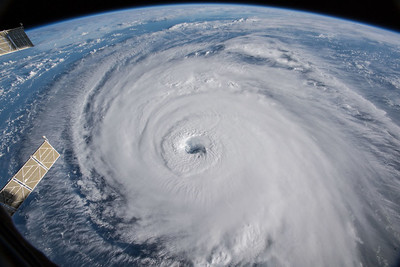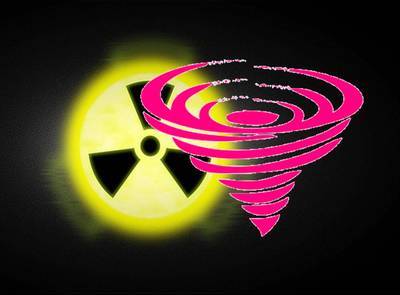Images by slightly_different from Pixabay, Clker-Free-Vector-Images from Pixabay, composite TLA
“Hurricane Season Is Here: Are You Prepared?”
That’s the title of a flyer we received at the Fairewinds office in Charleston, South Carolina. It was from a local emergency preparedness organization. Yes, hurricane season is upon us.
We at Fairewinds have a plan in place and things ready to go, in case we have to leave quickly if a Category 3, 4 or 5 hurricane were to barrel into the SC coast and greater Charleston area.
Last year, when Hurricane Florence was due to hit the Charleston area in mid-September, with our cats in tow we prepared to leave and drive north to stay with family in North Carolina. Then Florence suddenly turned north into southeastern North Carolina, so we stayed put in Charleston where we only received a few hours of light rain!
Unfortunately, Hurricane Florence barreled ashore as a Category 2 hurricane caused flooding resulting in more than $24 Billion worth of damage. We were lucky, as we all missed a Fukushima-style meltdown with all the flooding when the Brunswick reactor in North Carolina was completely isolated, and the flood waters rose around it. We will tell you it certainly raised red flags for us, and we’ll discuss it more a little later in this post.
So, honestly, how good are emergency plans for the numerous atomic power reactors scattered up and down the eastern US coast, especially here in the South? Let’s first take a look at history:
Hurricane Andrew
In 1992, 145 MPH Hurricane Andrew directly hit the Turkey Point Nuclear Power Plant, just south of Miami, Florida.
Here is what the Union of Concerned Scientist had to say about the damage:
“The hurricane knocked out all offsite power for the plant for more than five days, caused the total loss of the plant’s communication systems, blocked the access road to the site with debris, and damaged the fire protection and security systems as well as the warehouse facilities. …. The telephone systems at Turkey Point did not function because the hurricane damaged the onsite antennas and the offsite repeating stations. Except for one hand-held radio, the plant’s radio systems did not function during and immediately following the storm. Overall, all offsite communications were lost for about four hours during the storm, and reliable communications were not restored for about 24 hours following the storm. The fire protection system at the plant was disabled when winds knocked a high tower tank onto a 500,000 gallon tank containing water for the fire protection system.”
The only source of power to the plant were the diesel generators, but they had been placed near a smoke stack. That smoke stack was part of an oil powered plant, and it had developed cracks and was in danger of falling on the emergency diesel generators for the atomic powered reactor!
It was a very close call!
NASA Goddard Space Flight Center, "Tracking a Superstorm" ![]()
Superstorm Sandy
In October 2012, after traveling up the Eastern Seaboard, Superstorm Sandy hit New York City. Fairewinds’ major concern was that Oyster Creek, the nation’s oldest nuclear power reactor, took the brunt of the storm. If you did not know, the Oyster Creek plant is located in southern New Jersey very near to NYC and Philadelphia.
Houses nearest to the reactor were washed into roads normally used for evacuation routes, and almost all of the emergency sirens were completely destroyed. If an evacuation had been necessary, thousands of people would have been trapped. The plant completely lost off-site power and was in the midst of a refueling at the time of the storm – meaning that the freshly spent fuel, which is the hottest and most radioactive, had been removed from the reactor core and placed in the spent fuel pool, so that new uranium-based fuel could be remixed with the remaining old fuel in order to give the reactor more power – this remixing of the fuel occurs at every atomic powered reactor about every 18-months. Without electrical power available to run the entire site, the spent fuel pool began to heat up just like what occurred at Fukushima Daiichi one year earlier.
According to the New York Times:
“The loss interrupted cooling of the reactor and the spent fuel pool. … the spent fuel pool would have boiled in 28 hours. Some hours after that, enough water would boil away to create the possibility of fuel damage, meaning a release of radioactive material.”
Worse still is that the rising water in Barnegat Bay was within 6 inches of flooding the emergency cooling pumps, and that is something that also happened at the six atomic reactor Fukushima Daiichi site – emergency cooling pumps along the ocean shore were eviscerated by the tsunami, thus making it impossible for the necessary cooling water to reach four of the atomic reactors in Japan.
As reported by NJ.com:
“Oyster Creek was already out of service for scheduled refueling…. A rising tide, the direction of the wind and the storm's surge combined to raise water levels in Oyster Creek's intake structure, the NRC said… high water levels at the facility, which sits along Barnegat Bay, prompted safety officials to declare an "unusual event" around 7 p.m. About two hours later, the situation was upgraded to an "alert…"
Again, it was a very close call!
 Hurricane Florence - NASA Johnson Hurricane Florence from the International Space Station
Hurricane Florence - NASA Johnson Hurricane Florence from the International Space Station ![]()
As promised, here’s more about Hurricane Florence. Florence made landfall near the border between North and South Carolina in September 2018. While only a Category 2 storm, it brought 23 inches – almost 2-feet–of torrential rains that created extensive flooding to that entire corner of North Carolina – this was the worst flooding ever in that part of the country! The flooding caused the Brunswick Nuclear plant to issue an “unusual event” warning – such a nukespeak and euphemistic word.
The online news site Reuters reported it thusly:
“Duke Energy Corp said Monday that its Brunswick nuclear power plant in North Carolina was inaccessible due to flooding from storm Florence, but the plant remained safely shut down.
Duke said: ‘A hazardous event has resulted in on site conditions sufficient to prohibit the plant staff from accessing the site via personal vehicles due to flooding of local roads,’ according to an event report made available on the U.S. Nuclear Regulatory Commission’s website on Monday.”
In reality, the situation was actually much worse. The city of Wilmington NC, with a population of more than 100,000 people and located only 20 miles north of the Brunswick reactors, was so flooded that the city was cut off from help or evacuation for almost a week.
According to USA Today:
“Prosperous, vibrant Wilmington opened distribution centers for food, water and tarps Tuesday as officials in the North Carolina city struggled to feed a population cut off by the historic floods of once-mighty Hurricane Florence.
The Cape Fear River, normally a tourist attraction and economic boon, has brought the city of 120,000 to its knees. Residents who didn't flee before Florence hit last week are now reliant on essentials rolling in on high-water trucks and helicopters.”
Overview
Hurricane Andrew had exceptionally high winds. Hurricane Sandy created high tides that flooded the low-lying vulnerable shorelands. Hurricane Florence produced copious amounts of rain. However, regardless of the cause for these disasters, in each and every case people living or working nearby were suddenly stranded and were unable to evacuate.
Clearly, planning for an atomic power emergency during a hurricane is a fool’s errand. We ask: Why then does the NRC allow nukes to continue to operate when hurricanes approach? Doing so, does not give the reactor operators any opportunity to batten down the hatches, so to speak. The fuel does not get the opportunity to cool slightly, and important community protection safeguards that would protect thousands, and maybe even millions, of lives are not put in place.
The Next “Big One”
The East Coast is peppered with atomic reactors and nuclear waste dumps, especially in the Southern states. As we have well-learned from Hurricane Florence (as well as Hurricane Michael which hit the Florida Panhandle in Mexico Beach as a Category 4 hurricane), meteorologists and all the sophisticated equipment in the world still cannot determine exactly when and where a hurricane will make landfall nor how high the winds will be pushing water ashore or how much rain will fall causing extensive flooding.
As we face climate crisis head on – something that has caused and will continue to cause more catastrophic storms – Fairewinds is fairly certain that there will be some sort of nuclear facility nearby that is put at great risk.
Fairewinds’ nightmare scenario would occur if a hurricane similar to Florence were to hit the coast 200 miles further south than Florence actually did. Why is that a concern? Because the border between South Carolina and Georgia is marked by the Savannah River. The banks of the Savannah River are home to two atomic power reactors (Vogtle 1 & 2), and more importantly to a Department of Energy (DOE) government nuclear weapons facility as well as the largest nuclear waste dump on the East Coast.
If the manmade earthen berms holding back the nuclear waste at the Savannah River Atomic Waste Dump (commonly referred to as the Savannah River Site) or like the Barnwell Disposal Facility (pictured above) are breached by a Hurricane Florence type event and its torrential rain and extensive flooding, the Savannah River would be inundated with a toxic soup of radioactive isotopes! As this poisonous flood rushes downstream, the damage to small hamlets and the port city of Savannah, Georgia would create one of the largest environmental disasters the world has ever seen. Tons of radioactive water would literally rush down the Savannah River dumping its toxic muck into the bay, estuaries, and the Atlantic Ocean leaving a plutonium-laden residue that is deadly for 250,000-years…
Sooner or later, rolling snake eyes is inevitable.
Fairewinds.org
Fairewinds Energy Education is a 501c3 non-profit organization founded in 2008 by Maggie Gundersen, journalist, paralegal, and former atomic power industry spokesperson. Maggie is the president of Fairewinds Energy Education as well as a member of the Board of Directors. Her husband nuclear engineer and expert witness Arnie Gundersen is the chief engineer for Fairewinds Associates, Inc, paralegal services and expert testimony firm as well as a member of Fairewinds Energy Education’s Board of Directors.
We at TLA have listed them as the go-to site for nuclear energy information since 2011. - Ed.









